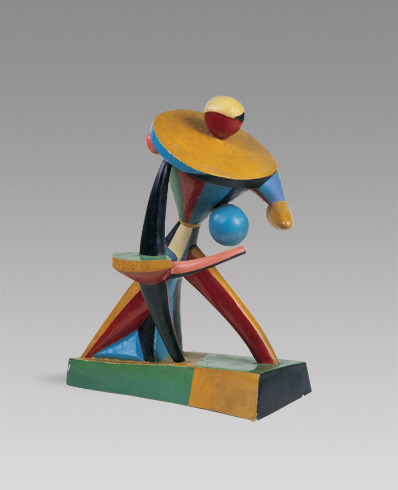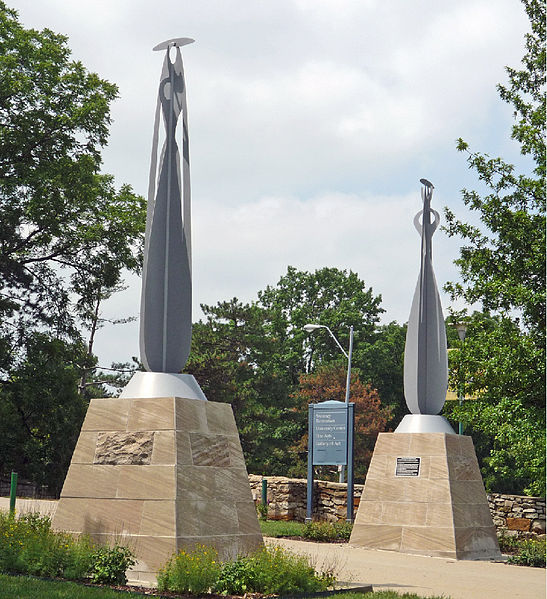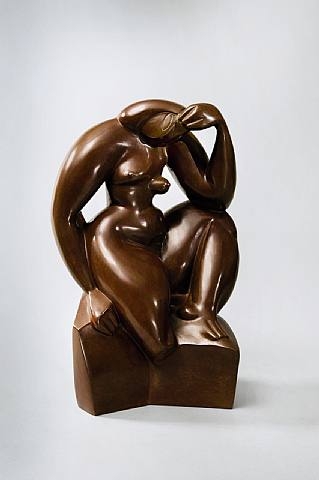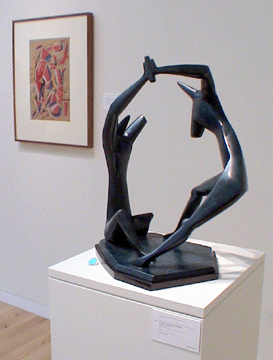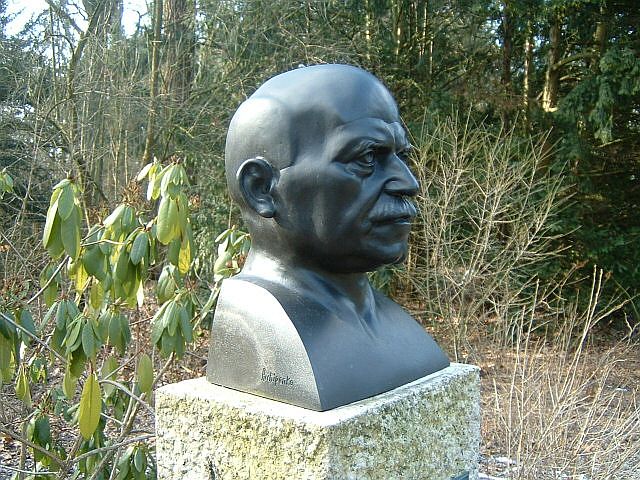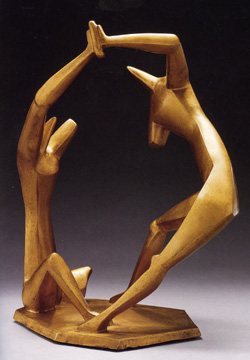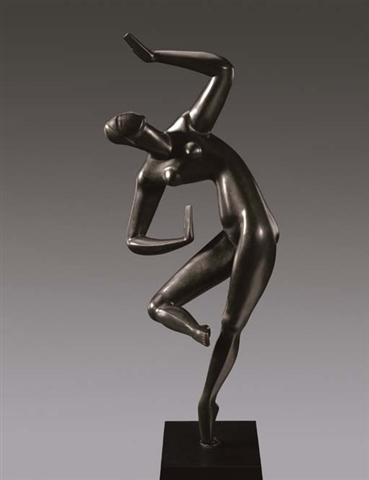<Back to Index>
- Psychologist Pierre Marie Félix Janet, 1859
- Sculptor Alexander Porfyrovych Archipenko, 1887
- King of Spain Amadeo I, 1845
PAGE SPONSOR
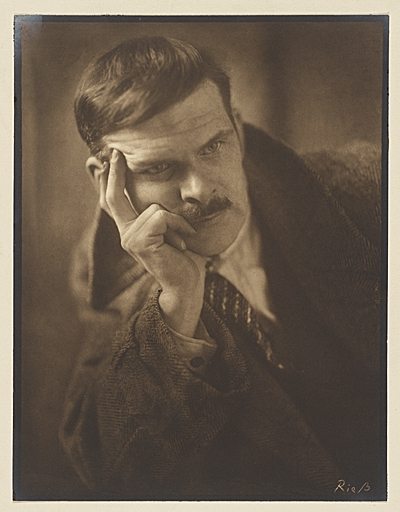
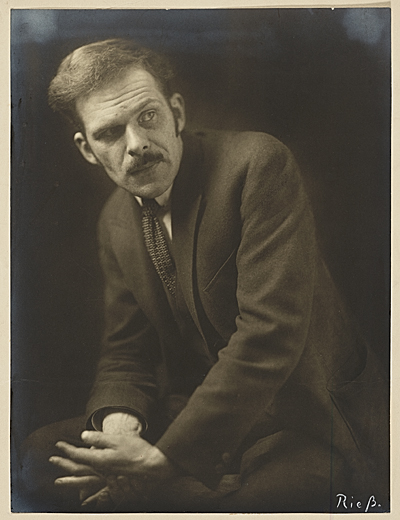
Alexander Porfyrovych Archipenko (also referred to as Olexandr, Oleksandr, or Aleksandr) (Ukrainian: Олександр Порфирович Архипенко) (May 30, 1887 – February 25, 1964) was a Ukrainian avant garde artist, sculptor, and graphic artist.
Alexander Archipenko was born in Kiev, in present day Ukraine (at the time a part of the Russian Empire) to Porfiry Antonowych Archipenko and Poroskowia Vassylivna Machowa Archipenko; he was the younger brother of Eugene Archipenko.
From 1902 - 1905, he attended the Kiev Art School (KKHU), after which he continued his education in the arts as the student of S. Svyatoslavsky in 1906 (also in Kiev). In the same year he had an exhibition in Kiev, together with Alexander Bogomazov. That same year, Archipenko moved to Moscow, where he had a chance to exhibit his work in some group shows.
By 1909, however, he had moved to Paris and was a resident in the artist's Colony La Ruche, among émigré Russian artists: Wladimir Baranoff - Rossine, Sonia Delaunay - Terk, and Nathan Altman.
After 1910 Alexander Archipenko had exhibitions at Salon des Independants, Salon d'Automne together with Aleksandra Ekster, Kazimir Malevich, Vadym Meller, Sonia Delaunay (Terk) alongside Pablo Picasso, Georges Braque, and Andre Derain.
In 1912 Archipenko had his first personal exhibition at the Museum Folkwang in Hagen. From 1912 to 1914 Archipenko was teaching at his own Art School in Paris. In 1913 Archipenko's works appeared at the Armory Show in New York. Archipenko moved to Nice in 1914. In 1920 he participated in Twelfth Biennale Internazionale dell'Arte di Venezia in Italy and started his own Art school in Berlin the following year.
In 1922 Archipenko participated in the First Russian Art Exhibition in the Gallery van Diemen in Berlin together with Aleksandra Ekster, Kazimir Malevich, Solomon Nikritin, El Lissitzky and others. In 1923 he emigrated to the USA, becoming an American citizen in 1929. Also in 1923, Archipenko participated in an exhibition of Russian Paintings and Sculpture. In 1933 he exhibited at the Ukrainian pavilion in Chicago as part of the Century of Progress World's Fair. Alexander Archipenko contributed the most to the success of the
Ukrainian pavilion. His works occupied one room and were valued at
$25,000 dollars. In 1936 Archipenko participated in an exhibition Cubism and Abstract Art in New York as well as numerous exhibitions in Europe and other places in the US. Alexander Archipenko died on February 25, 1964, in New York. He is interred at Woodlawn Cemetery.
Associated with the cubist movement, Archipenko departed from the neo-classical sculpture of his time and used negative space to
create a new way of looking at the human figure, showing a number of
views of the subject simultaneously. He is known for introducing
sculptural voids, and for his inventive mixing of genres throughout his
career: devising 'sculpto-paintings', and later experimenting with
materials such as clear acrylic and terra cotta.


